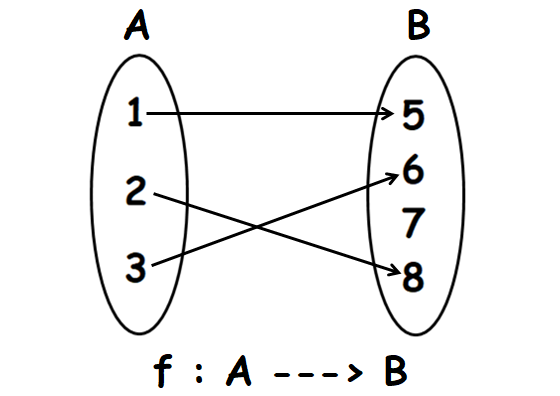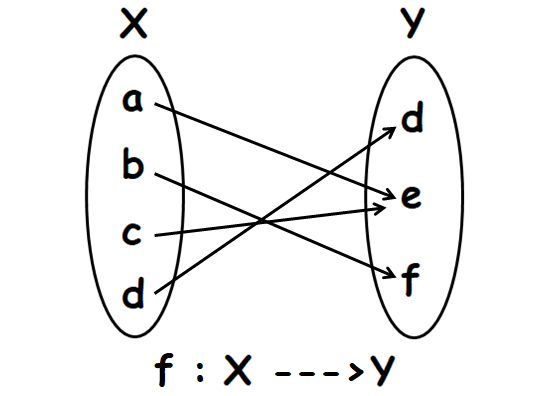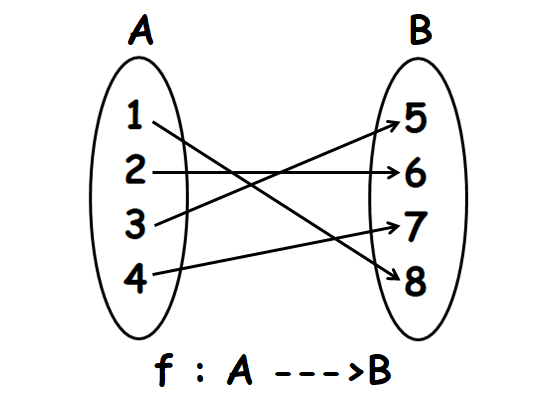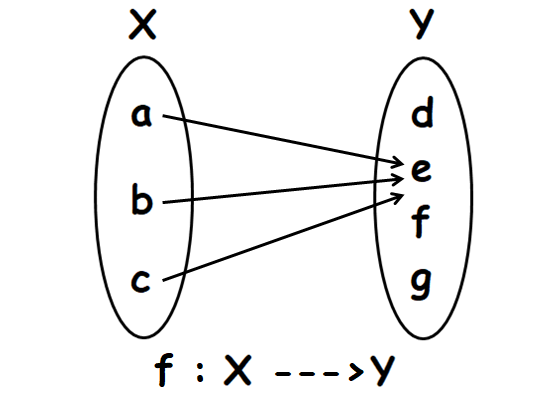DOMAIN CODOMAIN AND RANGE OF A FUNCTION
Let f be a function and we have
f : A ---> B
Then, A is called the domain, B is called the co-domain of f.
The set f(A) = {f(x) : x ∈ A} is called the range.
Example :
Let A = {1, 2, 3, 4} and B = {1, 4, 9, 16, 25}
Let us consider the rule f(x) = x2 to map elements from A to B.
Then, we have
f(1) = 12 = 1
f(2) = 22 = 4
f(3) = 32 = 9
f(4) = 42 = 16
Clearly each element in A has a unique image in B.
So, f : A ---> B : f(x) = x2 is a function from A to B.
Here, we have
Domain (f) = A = {1, 2, 3, 4}
Co-Domain (f) = B = {1, 4, 9, 16, 25}
Range (f) = {1, 4, 9, 16}
Note :
If co-domain and range are equal, then the function will be an onto or surjective function.
If range is a proper subset of co-domain, then the function will be an into function.
Practice Problems
Problem 1 :
Let A = {1, 2, 3} and B = {5, 6, 7, 8}.
f is the function which maps the elements from A to B as shown below.

Find, the domain, co-domain and range of f.
Solution :
Domain (f) = A = {1, 2, 3}
Co-domain (f) = B = {5, 6, 7, 8}
Range (f) = {5, 6, 7}
Problem 2 :
Let X = {a, b, c, d} and Y = {d, e, f}.
f is the function which maps the elements from X to Y as shown below.

Find, the domain, co-domain and range of f.
Solution :
Domain (f) = A = {a, b, c, d}
Co-domain (f) = B = {d, e, f}
Range (f) = {d, e, f}
Problem 3 :
Let A = {1, 2, 3} and B = {5, 6, 7, 8}.
f is the function which maps the elements from A to B as shown below.

Find, the domain, co-domain and range of f.
Solution :
Domain (f) = A = {1, 2, 3, 4}
Co-domain (f) = B = {5, 6, 7, 8}
Range (f) = {5, 6, 7, 8}
Problem 4 :
Let X = {a, b, c} and Y = {d, e, f, g}.
f is the function which maps the elements from X to Y as shown below.

Find, the domain, co-domain and range of f.
Solution :
Domain (f) = A = {a, b, c}
Co-domain (f) = B = {d, e, f, g}
Range (f) = {e}
Kindly mail your feedback to v4formath@gmail.com
We always appreciate your feedback.
©All rights reserved. onlinemath4all.com
Recent Articles
-
Digital SAT Math Problems and Solutions (Part - 146)
Apr 18, 25 06:52 AM
Digital SAT Math Problems and Solutions (Part - 146) -
Logarithmic Derivative Problems and Solutions
Apr 16, 25 09:25 PM
Logarithmic Derivative Problems and Solutions -
Digital SAT Math Problems and Solutions (Part - 145)
Apr 16, 25 12:35 PM
Digital SAT Math Problems and Solutions (Part - 145)

